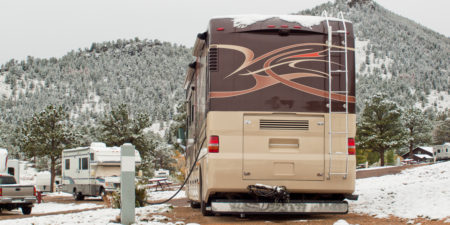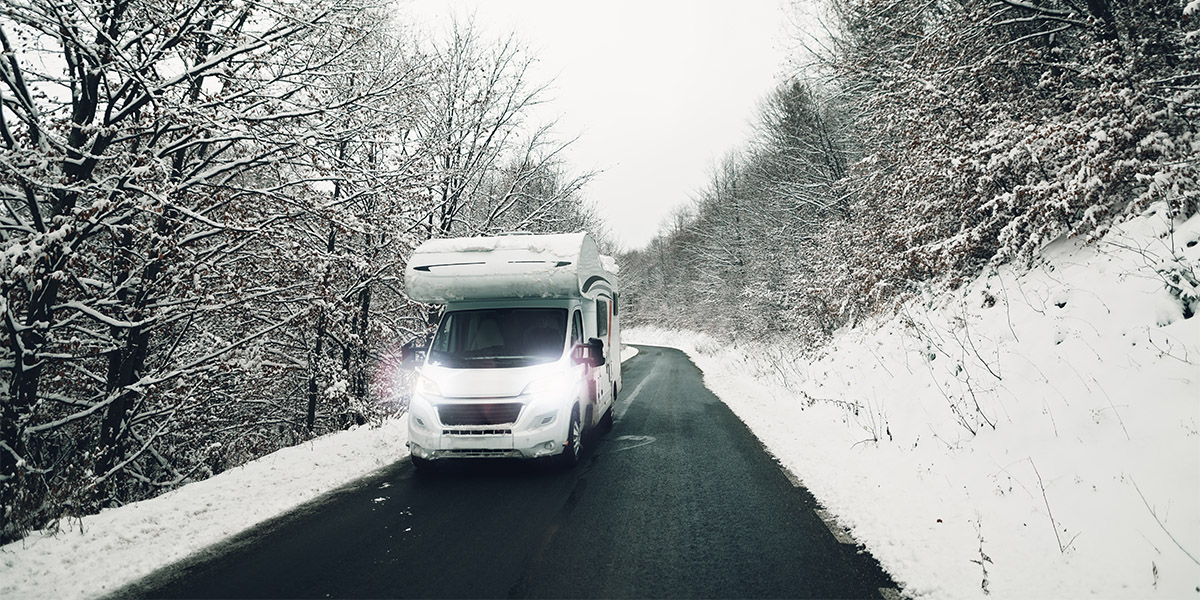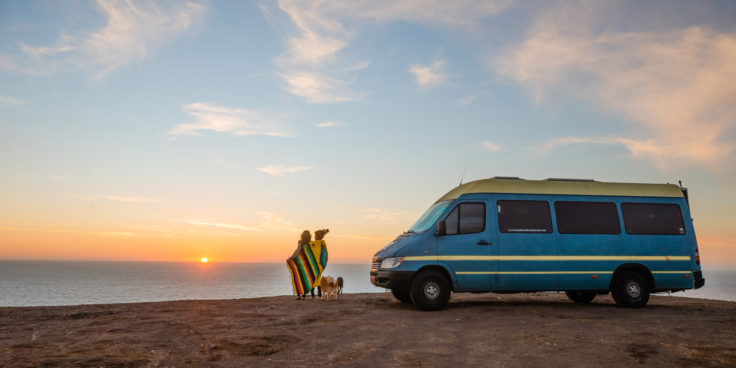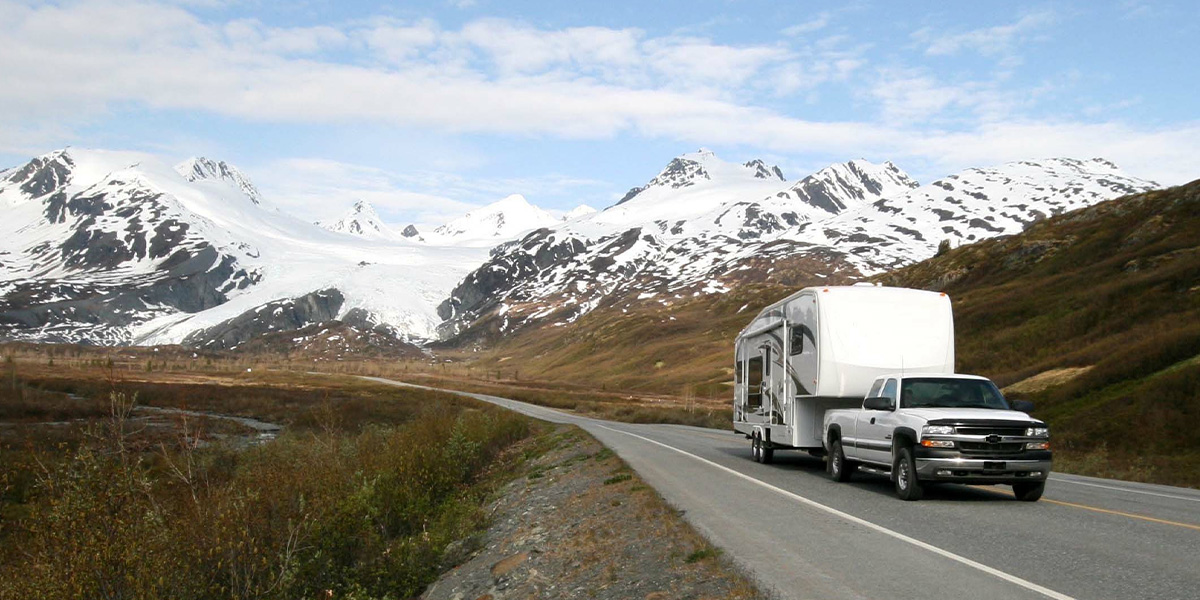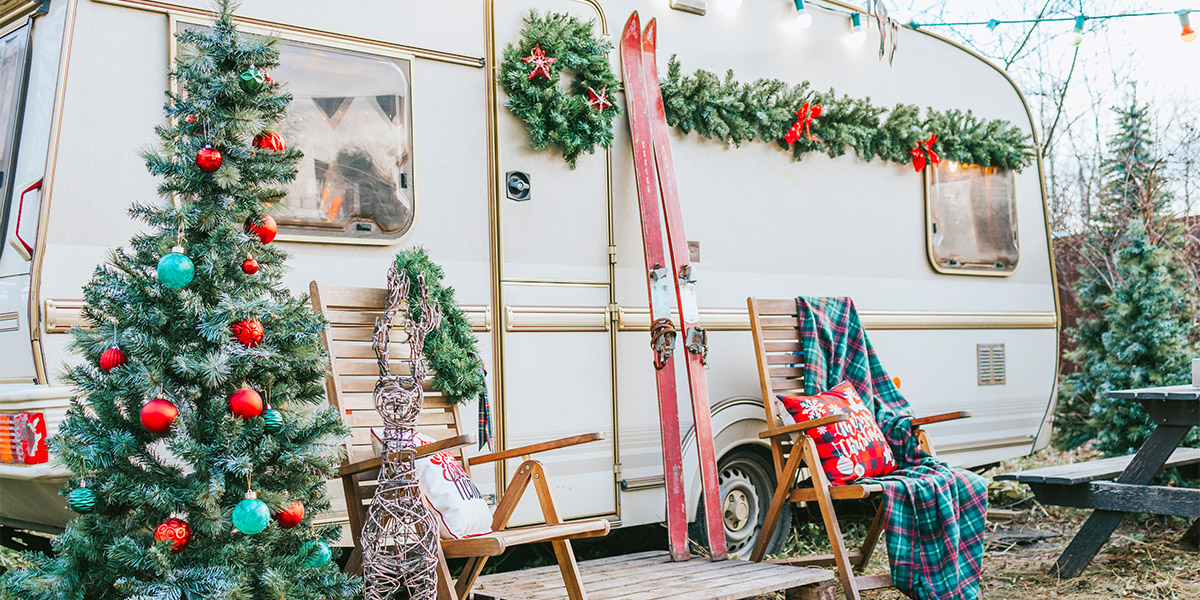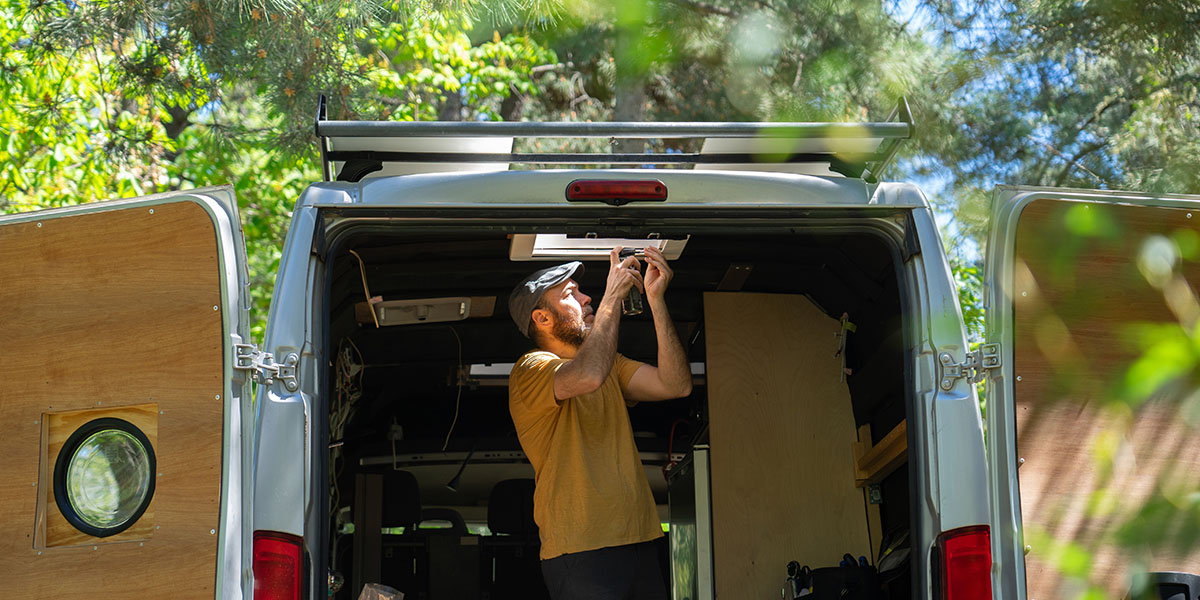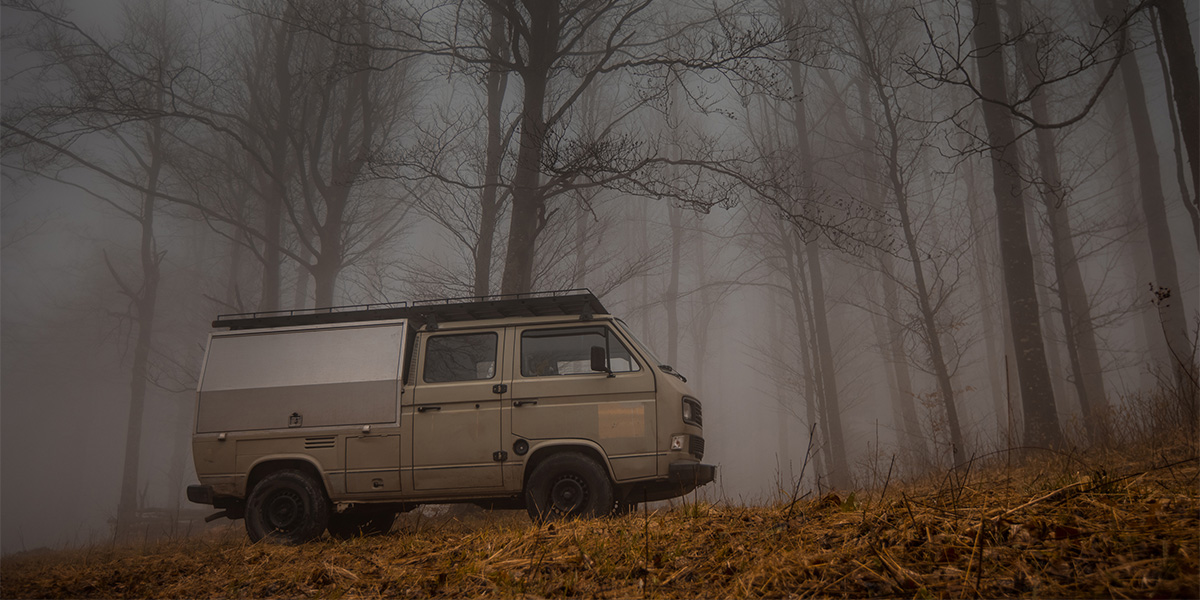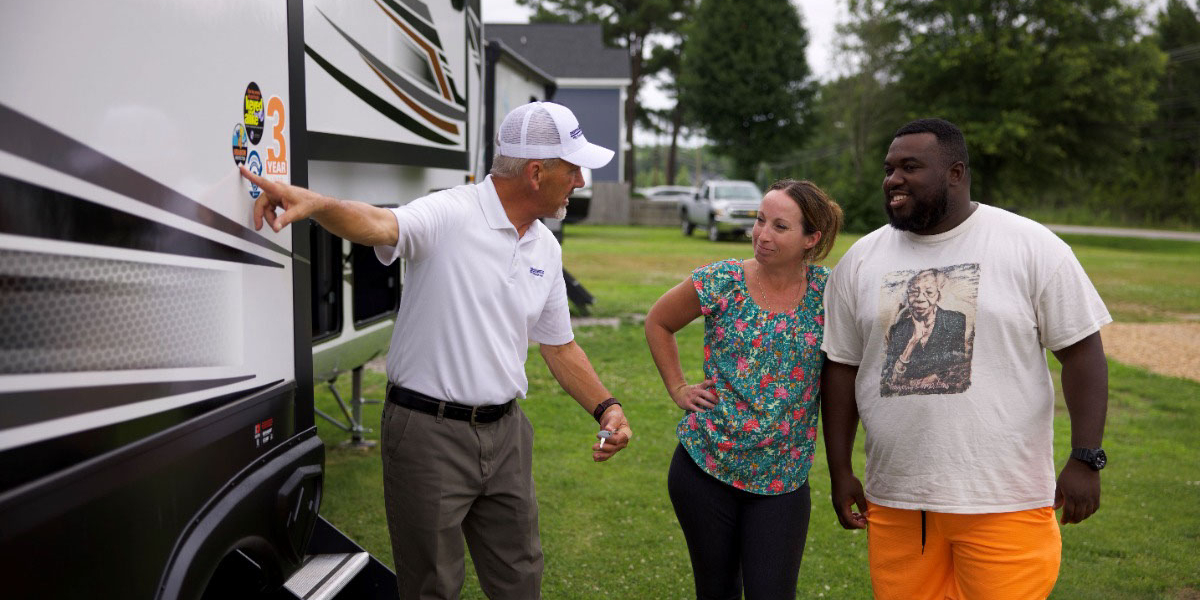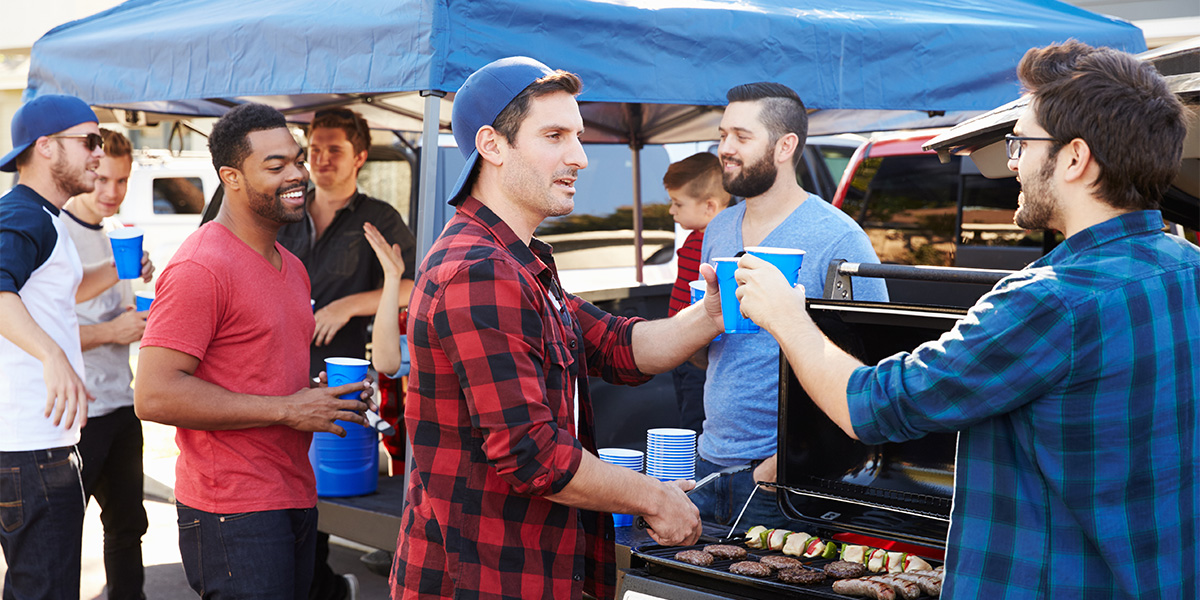Updated For 2023
Your RV adventures are typically a time for relaxation or adventure; but, what about taking a more terrifying trip? Instead of just telling ghost stories around the campfire, put yourself at the center of some paranormal activity by staying at a haunted campsite. Hit the road, if you dare, for RV Trader’s six most haunted RV campgrounds.
1. Hunting Island State Park, South Carolina
Just outside of beautiful Beaufort, South Carolina is the state’s most popular state park, Hunting Island State Park. The park attracts over a million visitors each year for its pristine beaches, maritime forests, and the historic Hunting Island Lighthouse. While the lighthouse has been out of commission since 1933, there’s still plenty of ghostly activity surrounding the landmark.
Stories about Hunting Island Lighthouse include one involving a former lighthouse keeper who tried, and failed, to save a drowning boy. Some say you can still see the lighthouse keeper pacing on the beach, searching for the boy he couldn’t save.
Another terrifying tale is about the daughter of a former lighthouse keeper who threw herself from the top of the lighthouse. Listen closely as you climb the 167 steps to the top of the lighthouse because you might even hear her moaning.
Hunting Island visitors and caretakers have also reported hearing banging on locked doors. Legend says this is another lighthouse keeper still trying to do their job, even in the afterlife. RV campers have also heard knocking on their doors in the middle of the night. Hopefully it’s just the spirit of a friendly lighthouse keeper.
Hunting Island State Park RV Camping: Hunting Island State Park has two campgrounds with sites that can accommodate RVs up to 40-feet long. One campground offers water and electrical hookups.
2. Braley Pond, Virginia
Braley Pond was constructed in 1965 by the U.S. Forest Service as a recreational pond. A popular fishing and hiking spot located near Staunton, Virginia, Braley Pond is best known as the state’s most haunted campground and one of the most haunted campsites in the country.
Braley Pond is nestled within the George Washington National Forest, with campers and hikers reporting terrifying tales. Many believe it was an old gang murder at Braley Pond that kicked off mysterious occurrences at the site. Braley Pond has become a popular destination for ghost hunters searching for spirits, but some can’t handle more than one night of camping.
In an interview with The Dyrt, paranormal researcher and empath, Shea Willis, reported a feeling of uneasiness when she led a group to Braley Pond. When they arrived, two group members became physically ill. While the group left, Willis and another individual, known in the story as Kris Arnold, stayed the night. In the story, Willis detailed the unhuman presence she felt and the unexplainable sights she witnessed in the trees and in the water.
At one point, late at night, Willis and Arnold heard the sounds of someone flailing in the water. When they ran down to check things out, Arnold fell in the pond. As Willis was trying to help him, she felt something crawling on her back. While they two didn’t see anything on Willis’ back, something did stay with her. Willis said she had nightmares for weeks after visiting Braley Pond. However, she returned to the pond several times after that, saying she felt something pulling her back there.
Braley Pond RV Camping: While camping is not allowed directly on Braley Pond, there is an adjacent dispersed campsite with five spots. Intended for primitive camping, the site is only accessible to smaller campers, such as Class B camper vans. There are no hookups and much of this land is remote and undeveloped.
3. Carl G. Washburne Memorial State Park, Oregon
While most haunted destinations feature stories of malevolent ghosts, Carl G. Washburne Memorial Park’s resident spirit is much more helpful. Visitors have reported sights of Rue, a former caretaker of the grounds and Heceta Head Lighthouse. Some say they’ve witnessed Rue sitting on the bed and moving items in rooms, while workers say that she’s offered to help them with their tasks.
Your best chance at a Rue sighting is to camp right on the beach, near the lighthouse. Even if you don’t see Rue, the coastal views of this park, perfect for whale watching, will be worth the trip.
Carl G. Washburne Memorial State Park RV Camping: Carl G. Washburne Memorial State Park offers 41 full-hookup campsites, as well as 14 electrical sites with water.
4. Holy Ghost Campground, New Mexico
With a name like Holy Ghost Campground, it’s no surprise that campers have had some spine-tingling experiences. Holy Ghost Creek is situated in a steep canyon in the Santa Fe National Forest. Campfire tales passed down through generations say that campground earned its name after a priest killed the Pueblo people who settled the land in the late 17th century. Other variations say it was the Pueblo people who killed the priest in self defense. Either way, the spirit of a Cathloic priest looms among the campground.
Today, the campground, located in the unincorporated town of Tererro, is the site of odd occurrences and unexplained situations, such as disappearing state troopers, shadows moving in the trees, and the sound of chanting in the forest.
Holy Ghost Campground RV Camping: Holy Ghost Campground can accommodate RV campers with rigs less than 30-feet long.
5. Lake Morena County Park, California
Located an hour away from sunny San Diego, California is Lake Morena County Park, the most remote reservoir in the county. For decades, visitors have observed spooky sightings along the vast desert and mountain landscape. In fact, a 1983 article for the San Diego Union recalled tales from terrified outdoor enthusiasts who spent time at the park.
Many shared the same experience of witnessing a man who seemingly “walked on air,” including a man named Walter Stucker, a park volunteer who stayed in a motorhome near the lake. In the article, Stucker said he suddenly woke up, peered out the window next to his bed, and was looking “right at a tall man standing outside by the window” whose feet weren’t touching the ground. Other park employees and nearby residents spoke of similar haunted happenings, including a ghostly woman in a long white dress and heavy footsteps around the campsite.
Lake Morena County Park RV Camping: Lake Morena County Park has 40 full-hookup and 17 partial-hookup RV campsites.
6. Bannack State Park, Montana
Visit the remains of a once thriving mining town, which is now home to centuries-old spirits. Bannack State Park is a National Historic Landmark and the site of Montana’s first major gold discovery in 1862. As word spread about the gold rush in Bannack, people traveled from all over to try to get rich. By 1863, this small town was now home to a population of 5,000 people, who introduced Old West-style violence and crime to the area.
Of all the shootouts and hangings in Bannack, the most notable was the death of sheriff Henry Plummer. The sheriff was suspected to be moonlighting as an outlaw himself, so a vigilante group of regional leaders came together and formed the Vigilance Committee, a posse that wreaked havoc on the town as they tried to stop the criminals. In the end, the Vigilance Committee hung Plummer and 21 other possible bandits. Many visitors claim that Plummer’s ghost still haunts the area, looking to clear his name.
While Bannack is far from the bustling town it once was, Bannack State Park hosts nightly ghost tours in October for tourists who want to learn more about the town’s past and the spirits who might still reside there. One of the park’s historic sites, Hotel Meade, is said to be a hotspot for paranormal activity, including the sounds of crying children and an apparition of a teenage girl.
Bannack State Park RV Camping: Bannack State Park has 20 back-in campsites that can accommodate RVs ranging from 18- to 45-feet long. There are also two pull-through sites for a 32-foot and 60-foot RV, such as a large fifth wheel or motorhome.
By day, these campsites offer picturesque scenery and trails to explore. But, at night, you may experience unexplained phenomena and even have a ghostly encounter. Are you brave enough for this type of creepy camping? Find the perfect RV for your ghoulish getaway on the nationwide online marketplace at RVTrader.com.
Disclaimer: This article is largely a work of folklore or fiction. Names, individuals, events, and incidents either are products of the author’s imagination, are the recitation of all or part of a myth or legend, and/or are used fictitiously. Any resemblance to actual events or incidents is coincidental.
